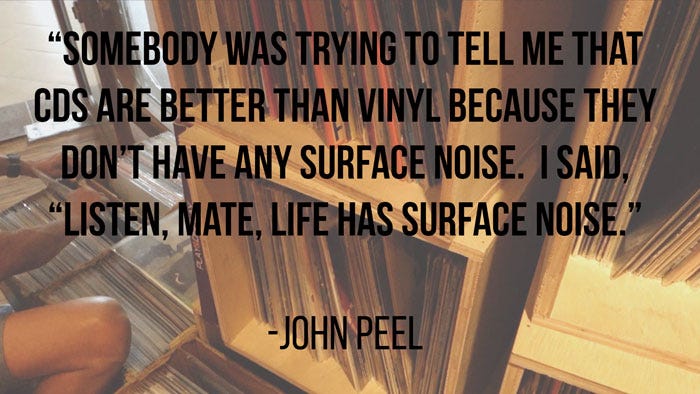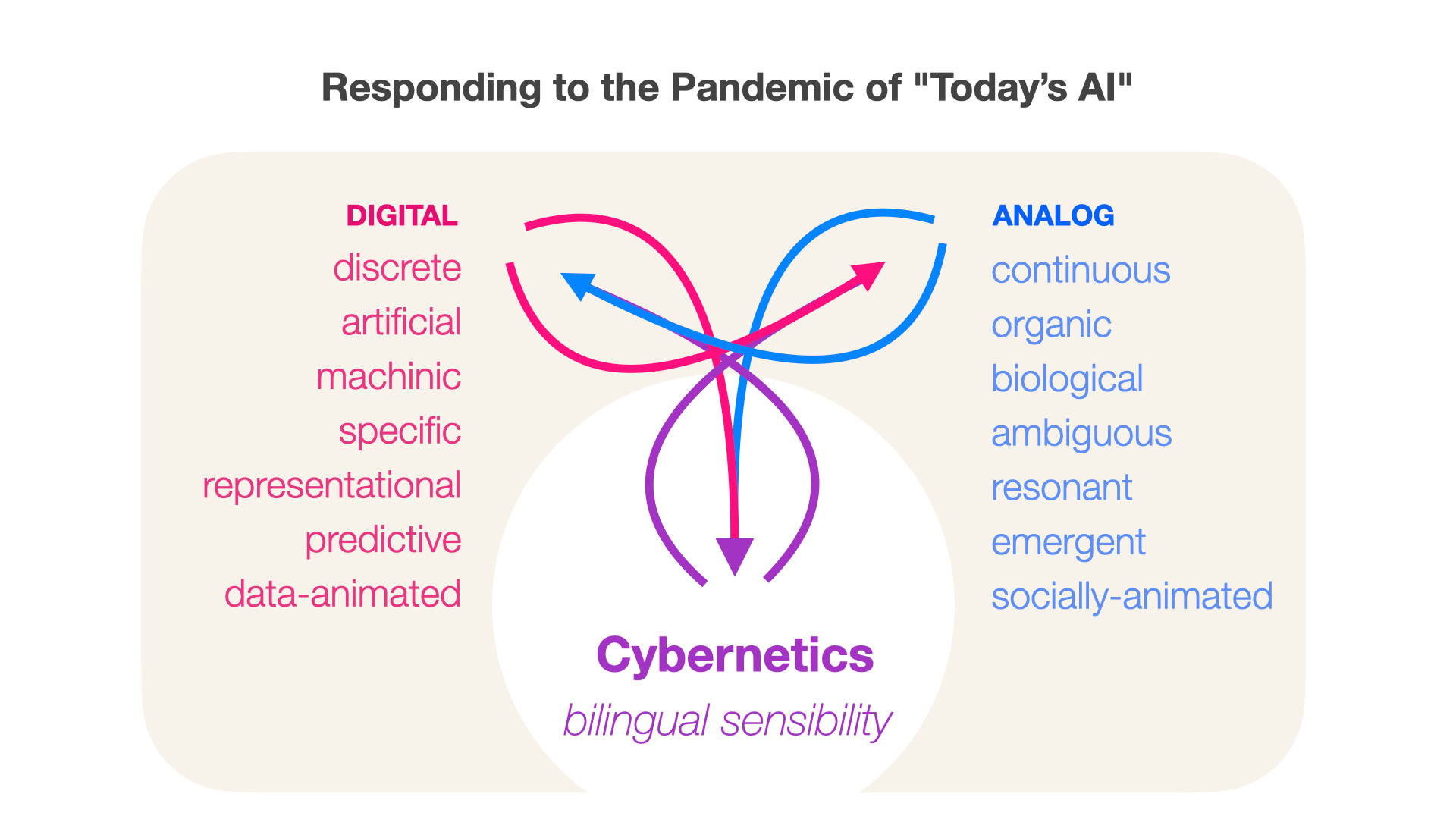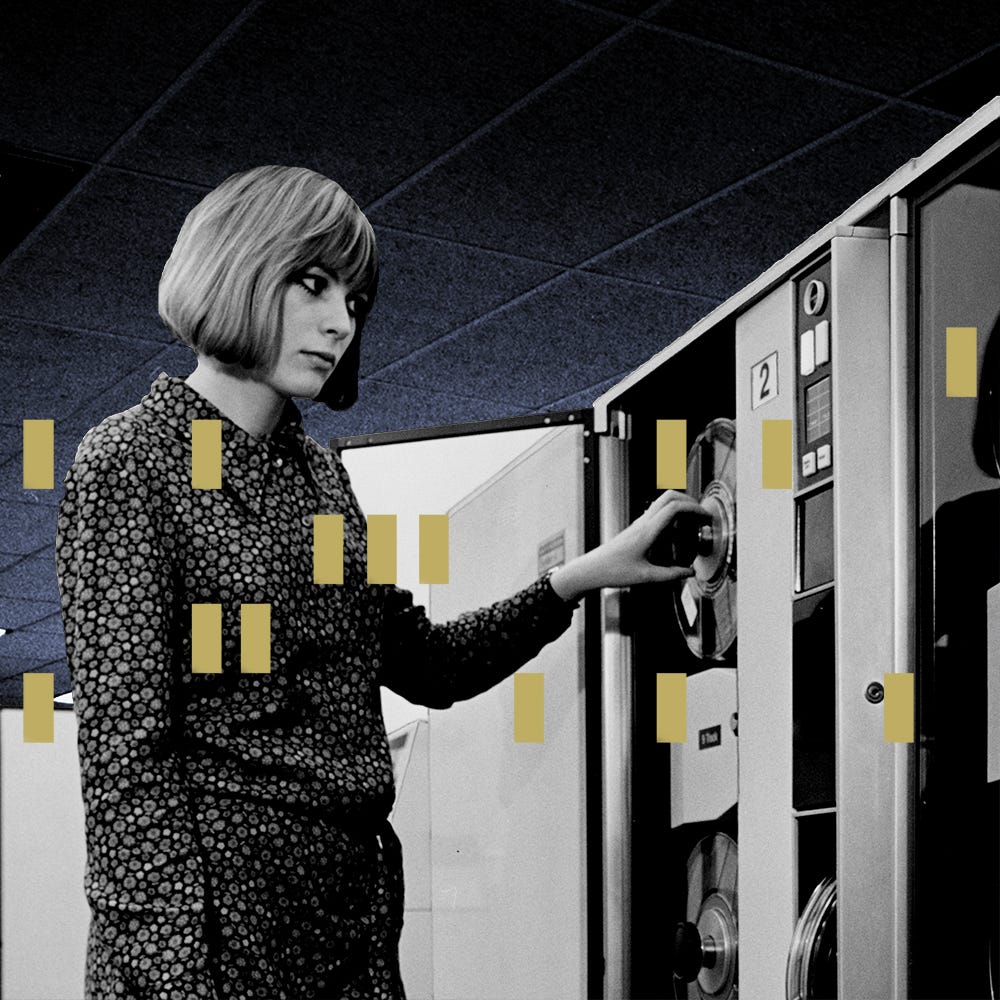Against Digital Supremacy
Many of our problems arise from mistaking spectrums for the binary of their extremes

“There may be said to be two classes of people in the world; those who constantly divide the people of the world into two classes, and those who do not.” — Robert Benchley, in a 1921 review of a phone directory
I worked in a record store around the time MP3s started to become pervasive. You could burn 11 hours of music to a CD, which seemed like a revelation. It seemed inevitable that digital formats would triumph over vinyl. Vinyl could not be played in a car, stored comparatively little information, warped and hissed, and took up a lot of space.
There were arguments that vinyl purists were holding on to an obsolete technology out of stubborn hipsterdom. Some people insisted it sounded better, because the sound waves etched into vinyl were curved like true sine waves, which reproduced sound exactly as it was recorded and heard. Digital was always a series of square, a one or a zero, and the purists insisted it hit differently.

This was my introduction to digital and analog as two choices existing in opposition. Then I started getting into artificial intelligence and cybernetics, where these arguments moved out of our living rooms and into our social fabric. And I began to notice a certain trend toward what is best described as digital supremacy.
First though, it might be helpful to define some terms. After starting this piece I came across Bernard Dionysius Geoghegan and Alex Galloway discussing the “(nonsymbolic continuous) analog and the (symbolic and discrete) digital.”
Paul Pangaro has an excellent visualization extending these distinctions, with the intent of recombination — rather than answering digital supremacy with analog ones. You’ll note the words “digital and analog” appear in it, but later versions chiefly reference “data-animated” and “socially-animated” systems, removing the digital and analog concepts altogether.

I just spent a lot of time in a highly “pro-AI” scene and started pondering what troubled me about these frameworks. On one side, there is an activist bent in AI design that believes AI simply isn’t digital enough. Success, then, comes from eradicating traces of the analog from our designs for AI altogether.
Digital supremacy suggests not only that digital is “close enough” to analog reproductions of the world, but superior and preferable. This time, it’s not just vinyl vs mp3s. It’s an ideology that encompasses plans for everything, from music playback to modeling weather systems, running nuclear power plants, organizing recommendation engines, designing surveillance systems and automating parole hearings. In this world view, that the affordances it provides are worth the trade-offs of its small, indecipherable distortions, so long as we can perfect digital solutions to those disruptions.
So we come to this endless cycle of developers attempting to solve complex social problems, which are predominantly analog (“socially animated”), with digital (“data animated”) tools. It assumes that if one can digitize an interaction, one can “solve it” through a combination of datasets and code. That’s the central crux of the digital supremacist argument: that goals can be met by being analyzed, digitized, modeled, and predicted.
Few would self-identify as digital supremacists, but it’s packed into the belief that artificial intelligence, by virtue of being machine-driven and coded, can do jobs better than humans can. It’s at the heart of any agenda to digitize autonomous decision-making into a closed system. It’s part of the statement that “a machine can be coded to be more fair because it does not contain human biases.”
Digital supremacy is not just a technologically driven ideology. Binary thinking — that there is a one or zero that must be responded to, rather than infinite variations that must be adapted to — can infiltrate any number of spaces, especially when we look to computers for examples of how to organize human activities. It constantly manifests as mistaking spectrums for binaries and simplifying things into on/off results.
Digital supremacy doesn’t always have to be so extreme, and the digital is, itself, not the problem. Deborah Forster reminded me recently that binaries do exist in nature: human neurons, the most biological model we have, fire or don’t fire, just as electric pulses do or do not pulse within a computer. The idea for the second came from the first. But that doesn’t mean that computers function like brains; or that brains function like computers. To suggest that the model of the brain (computers) can be a model of the thing it was attempting to simulate (a brain) is digital supremacy.
What we lose in digital supremacy is the social element of technology. The analog is costly, inefficient, frustrating, and by definition ends in constant compromise. It is human. What if, instead of those two extremes, the digital could be used to reach analogic goals?
I’ve been working with the American Society for Cybernetics (ASC) & its current President, Paul Pangaro, on a series of events called the New Macy Meetings. The events (which were underway before I got involved) are about closing this divide between digital and analog ways of thinking. For me (and to be clear, I do not speak for Paul, or for the ASC) it’s about how the digital, data-driven ideology tends to crowd out any kind of analog mechanisms for feedback in the way we conceive of AI today.
I’ll be writing more about this idea, and the New Macy meetings, in future newsletters, and you’re all welcome to join the workshops, where we’ll be coming up with ideas based on this fusion framework. The next one is October 16 and you can get the details, and vote for the most important questions you want to see tackled, here. Or, you can see my rough notes on meeting #2 over here.
Things I’m Doing This Week

A new 11-song album from my AI-infused music project, The Organizing Committee, is set to be released this Tuesday (October 12) by the Canadian record label, Notype. We’re doing digital releases on Bandcamp but also offering CDs, which is perhaps ironic given the content of this newsletter, but it is honest-to-goodness thrilling as a musician to have a full physical release for the first time in my life.
It’s all about ideologies of computing, and the different paths we might take.
If you want to order a digipak, it comes with a 16-page essay about the album and ideologies of computing, with lyrics. It’s limited to 300 copies — think of it as an NFT for your car.
There was also a wonderful video made for the title track by the generative artist Guillaume Pelletier-Auger, who blended pixel art and generative models to produce scenes of computer-created order turning into computer-rendered chaos. We had a video premier on a real-life music blog, Foxy Digitalis, which said of the track: “Subversive hooks move across the cutting bass like a songbird dancing effortlessly through a cybernetic storm.”
Video’s at the link. You can pre-order the CD or digital download at Bandcamp.
Things I’m Reading This Week
####
Manyfesto.ai
(h/t to Buse Çetin)
A beautifully written document about decolonizing ideologies of AI, which I think our aforementioned cybernetic framework would do well to engage with:
We do not seek consensus: we value human difference. We reject the idea that any one framework could rule globally. We reject the Western-normative language of “ethical” AI and suggestions of “inclusivity” that do not destabilize current patterns of domination and address power asymmetries. We reject as half-measures any principles meant to tweak, reinforce, and whitewash the status quo, merely blunting its devastation. They fail to acknowledge how the social and the technical are interwoven, and technologies have immaterial as well as material impacts over specific gendered, racialized bodies and territories. Decoloniality rejects the divorcing of the material and immaterial, of feeling from being, knowing, doing or living.
####
Calculating the Souls of Black Folk: Predictive Analytics in the New York City Administration for Children’s Services
J. Khadijah Abdurahman (h/t to Ruha Benjamin)
“The garbage in, garbage out debate makes sense, within a narrow frame. Racist police departments can’t help but produce “dirty data.” This flawed data creates a feedback loop, codifying the historic legacy of America into predictive policing systems, which in turn directs the police to be in the neighborhoods they already occupy. There’s an ease in which we can make out the automating of inequality, but it’s much harder to see the infrastructure or the digital poorhouse being built through an iterative process of classifying and predicting the futures of Black, Indigenous and poor people. [Automated Decision Systems] accelerate and scale institutional racism while simultaneously building new forms of containment and discipline. Both must be understood together, if we are to map the implications of the turn to automated systems and the possibilities for resistance and refusal.”
####
Babel: Could a Machine Have an Unconscious?
Meghan O’Gieblyn
A comparison of writing by humans under hypnosis and Open AI’s language production AI, GPT-3, and corresponding attempts to psychoanalyze its output.
Whenever the ELIZA effect comes up in conversations about GPT-3, defenders of the technology retort that much of our own speech — political rhetoric, blog posts, punditry — only has the veneer of sense, its lucidity entirely dependent on a reader or listener filling in the gaps and finding meaning through inference. Likewise, when we speak, we often do so spontaneously, without fully processing or thinking through the meaning of our words.
Thank You
I’m finally back to a regular schedule. Thanks so much to all of you who hung out while I was away, and to those of you who continued to pay the monthly subscription, you are angels. FWIW, I was packing, moving from both Maine and Memphis to Rochester NY, starting a business, and finding a place to live simultaneously, and it was nuts. See you next week!





